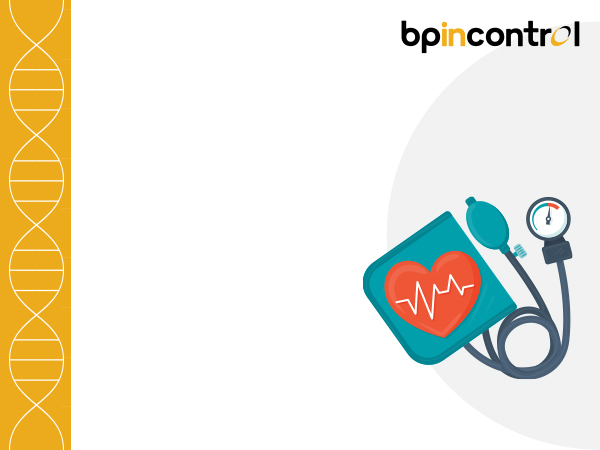Supine Hypertension: Understanding Its Causes, Risks, and Management

Table of Contents
Patients suffering from certain autonomic disorders (diseases of non-voluntary processes of the body, like heart beat) often complain about higher blood pressure while lying flat on their back, which leads to blood pressure regulation issues. This increase in blood pressure while lying down is termed supine hypertension. In this blog, we will delve into the details of the condition and learn about its potential risks.
What is Supine Hypertension?
If a person has high blood pressure when lying down, particularly during sleep or resting hours, it is referred to as supine hypertension. Supine hypertension is present in over 50% of patients with autonomic failure and orthostatic hypotension and is often associated with multiple organ damage. A patient may have supine hypertension if he/she has one or both of the below after five minutes of lying down:
- a systolic blood pressure of 140 millimeters of mercury (mm Hg) or higher
- a diastolic blood pressure of 90 mm Hg or higher
In addition, in supine hypertension, a person’s blood pressure is consistently elevated when they are lying down but returns to normal when they are standing or sitting.
Causes of Supine Hypertension
When the autonomic nervous system (ANS) of our body doesn’t function as it should, it gives rise to supine hypertension. Some of the involuntary body functions led by ANS include blood pressure, heart rate, body temperature, breathing, digestion, urination, sexual arousal etc. Below mentioned are some of the common causes of supine hypertension:
Autonomic nervous system dysfunction
Our autonomic nervous system regulates blood pressure, heart rate and many other crucial involuntary body functions. Any malfunctioning in them, like Parkinson’s disease, multiple system atrophy, or pure autonomic failure, can lead to supine hypertension. Upto 46% of people with Parkinson’s Disease and 37% of people with multiple system atrophy complain of having supine hypertension.
Sleep apnea
It is a potentially serious sleeping disorder that interrupts a person’s breathing during sleep. This, in turn, may cause fluctuations in blood pressure, giving rise to blood pressure in supine position.
Medications
Medications like beta-blockers and antidepressants can fluctuate BP levels contributing to blood pressure in supine position.
Symptoms and Risks of Supine Hypertension
Often, supine hypertension is linked with orthostatic hypotension, in which the blood pressure drops upon standing. Supine hypertension may not show any noticeable signs and symptoms. However, people suffering from supine hypertension may experience symptoms like:
- headaches
- shortness of breath
- chest pain
- fatigue
- swelling in the legs or ankles
Potential risks of supine hypertension include:
- Heart disease– Supine blood pressure imparts an additional load to the heart, thereby increasing the chances of coronary artery disease, heart failure, and other cardiovascular conditions.
- Stroke– The brain blood vessels can get damaged by supine pressure, increasing the risk of stroke
- Kidney damage – Damage of blood vessels over time can lead to chronic kidney diseases
- Cognitive decline – Supine blood pressure can lead to an increased risk of cognitive decline and dementia.
Diagnosing Supine Hypertension
Diagnosing supine hypertension may often be challenging as the patient’s blood pressure at the doctor’s chamber may not reflect their actual blood pressure when they are lying down. Below are a few of the diagnostic tests to evaluate supine hypertension:
Ambulatory blood pressure monitoring (ABPM)
Ambulatory blood pressure monitoring is a method to measure a patient’s blood pressure on a continuous basis for 24 hours. The test provides accurate test measurement beyond routine clinic check-ups and provides a clear picture of the patient’s BP levels throughout the day and night.
Tilt table test
Also called the passive head-up tilt test, it measures one’s blood pressure, heart rhythm and heart rate on a beat-by-beat basis in different degrees of reclining modalities. The table the patient lies on is tilted to different degrees and the difference in measurements are noted to understand underlying conditions. This helps to identify autonomic nervous system dysfunction, which can contribute to supine hypertension.
Orthostatic blood pressure readings
Orthostatic vital signs like blood pressure, pulse, and symptoms are obtained and recorded while the patient is in the supine position as well as in the standing position.
Managing Supine Hypertension
Treatment and management of supine hypertension include:
- Lifestyle alterations like reducing salt intake, managing body weight, increasing physical activity, and avoiding alcohol and tobacco.
- Changing the sleep position and elevating the head position to 30 degrees can help control supine blood pressure This lying position improves the blood flow to the heart and reduces fluid build-ups in the lungs.
- Keeping an eye regularly on blood pressure, including during sleep, can help track the blood pressure level and identify any potential complications.
Side lying and alternating between right and left side-lying positions provides abdominal and back support to promote comfort and gain relief from supine hypertension. Consult your physician to know how to identify and manage this condition on a daily basis.
Disclaimer
The information contained in this article/s is to educate / spread awareness in relation to hypertension and other diseases to the public at large. The contents of this article/s are created and developed by BPinControl.in (“The Website”) through its authors, which has necessary, authorisations, license, approvals, permits etc to allow usage of this articles on The Website. The views and opinions expressed in this article are views, opinions of the respective authors and are independently endorsed by doctors. Although great care has been taken in compiling and checking the information in this article/s, The Website shall not be responsible, or in any way liable for any errors, omissions or inaccuracies in this article/s whether arising from negligence or otherwise, or for any consequences arising therefrom. The content of this article is not a substitute for any medical advice. The Website shall not be held responsible or liable for any consequence arising out of reliance on the information provided in the article.


Comments (0)
No comments found.Add your comment